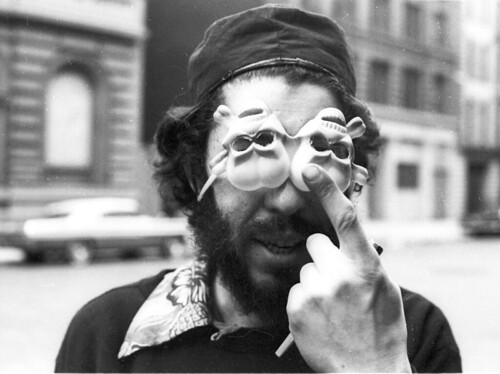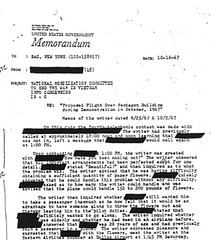 Bob Simmons Tuli Kupferberg
Bob Simmons Tuli KupferbergThe funniest part of reminiscing about the uber-subversive East Village Other for The New York Times is that the latter set me on the road to rebellion before the former was even founded in 1965. I’m told I was reading by age four and within a few years the first section I grabbed when the Sunday Times arrived every weekend was the Book Review. The Grove Press ads kidnapped my imagination: Who was this Alain Robbe-Grillet guy and how do you pronounce his name? Why was William Burroughs considered so dangerous and did his characters have meals while wearing no clothes? And speaking of clothes, how come the girls on Grove’s covers wore so little?
Obviously my nascent libido was ready for plucking, but my fascination was not simply sexual. I wanted to know why in the land of the First Amendment some had wanted to ban these books.
I bought my first issue of the Village Voice in February 1966; it contained an obituary of the abstract expressionist Hans Hofmann. Already a Dylan fan, I scanned the ads for folk clubs and was absolutely smitten by bohemia. The first girl who won my heart in elementary school was Jessica Hentoff (I don’t recall my feelings being reciprocated) and her father Nat wrote for the Voice. Soon I picked up the Voice’s competitor, The East Village Other.
No friends’ parents wrote for EVO. Scruffier, funnier and dirtier than the Voice, EVO was not simply about bohemia, it was an anarchist’s bomb in newsprint hurled at the bourgeoisie. Even at my tender age, I knew that I didn’t like the world that grown-ups had created. The troublemakers at The Other were expressing themselves in ways I could only daydream about at that point. Read more…
I can’t honestly remember how I became interested in The East Village Other. Probably, it’s just the age-old thing of a son wanting to know more about his father. That my father’s twin brother was also part of that scene (more involved as it turns out), made it even more curious. The more I researched the whole thing, the more I became aware of what an important part of history they had been.
I suppose it’s not every kid who would make a Freedom of Information Act request to learn everything he could about something, but that was the historian in me back in 1989 when I was writing my undergraduate thesis at the University of Colorado at Boulder. There were lots of stories about possible surveillance and possible this and that. I wanted to know for sure.
The documents came back from the FBI and many of them were typical FBI documents – not all that interesting and with lots of stuff blacked out. However, there were also many surprises, many little semantic treasures, and many things revealed that one might think shouldn’t be. The following account was culled from the most interesting of those documents.
In September 1967, The East Village Other hatched a plan to bomb the Pentagon. The planned date of this bombing was Oct. 20, 1967 (though it was changed to Oct. 21 at some point or the FBI got the date wrong in its original memorandum), the day before the National Mobilization Committee to End the War in Vietnam was to hold its march on Washington. On page 22 of EVO’s September 1-15 issue was a not-so-subtle ad: “Pilot Wanted for Daring Feat, phone 228-8640, ask for ALLEN or WALTER.” Allen was my uncle, Allen Katzman and Walter was Walter Bowart. The plan was true and the FBI took immediate notice, only the bomb wasn’t nuclear or conventional. It was flowers. Read more…
A small shop on East Ninth Street, Flower Power has promoted natural healing through the use of flowers and herbs for the past 17 years.
Its owner, Lata Kennedy, and regular customers swear by the powerful medicinal remedies plants can offer.
NYU Journalism’s Sarah Tung explores the healing powers of herbs.






